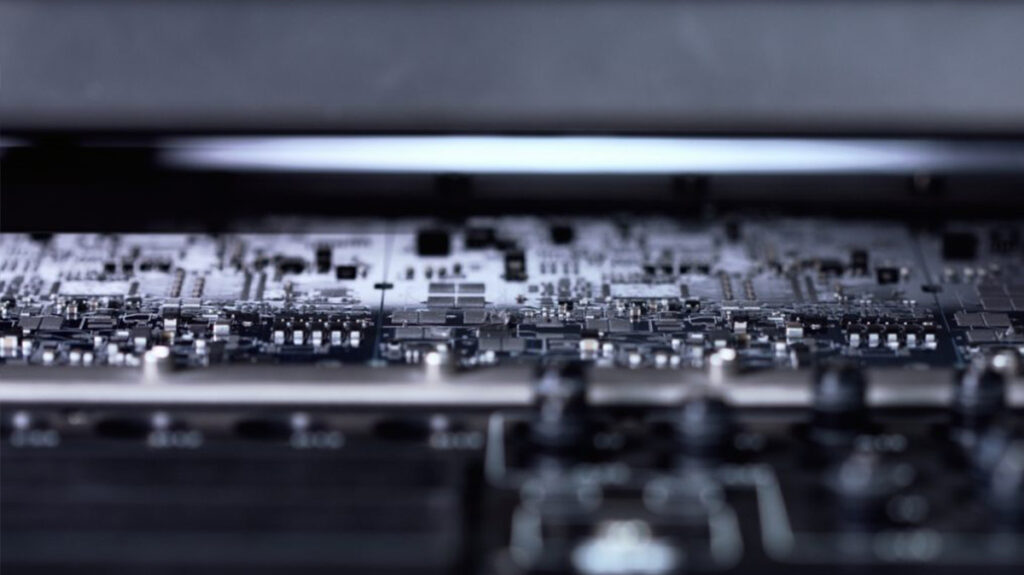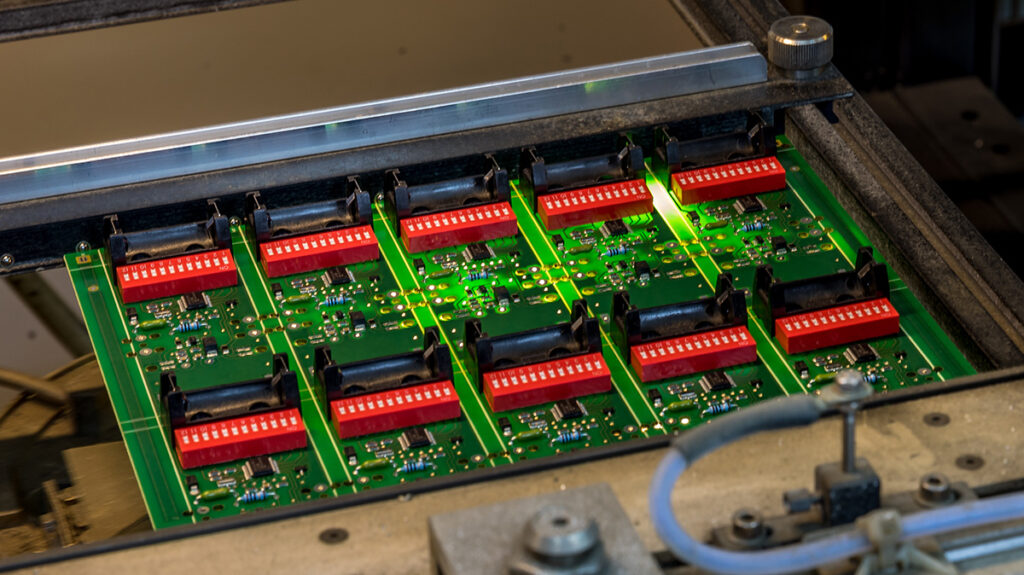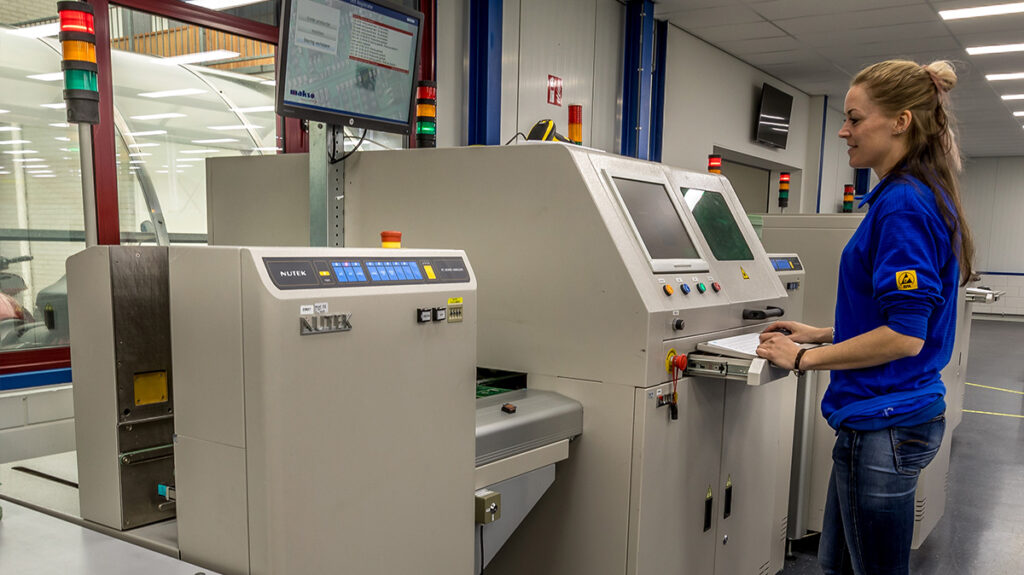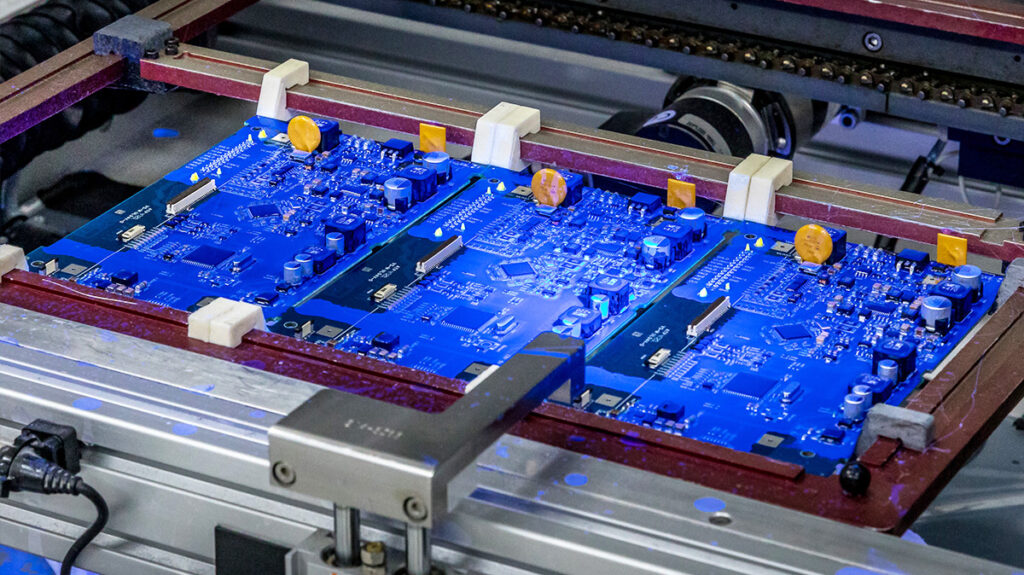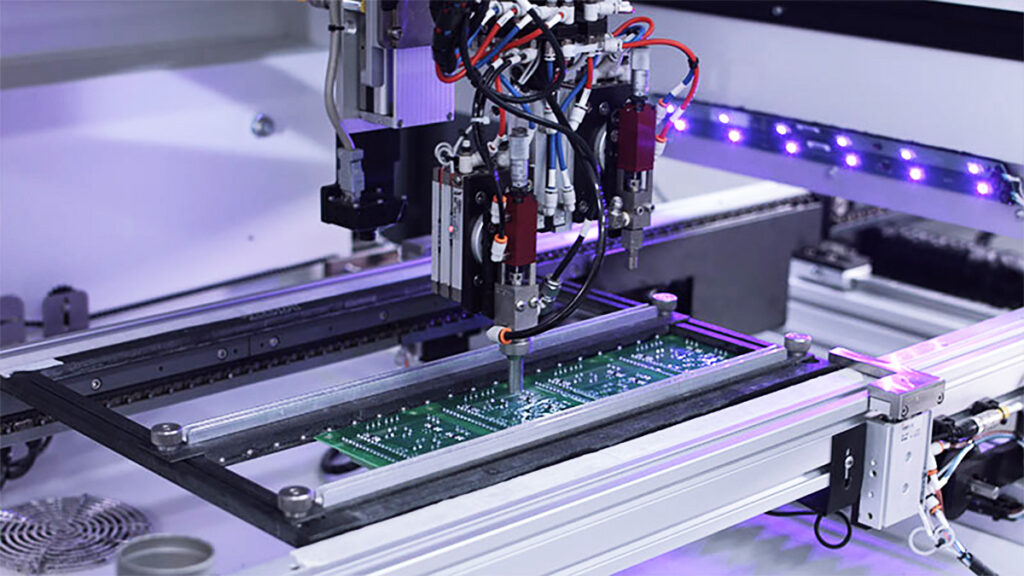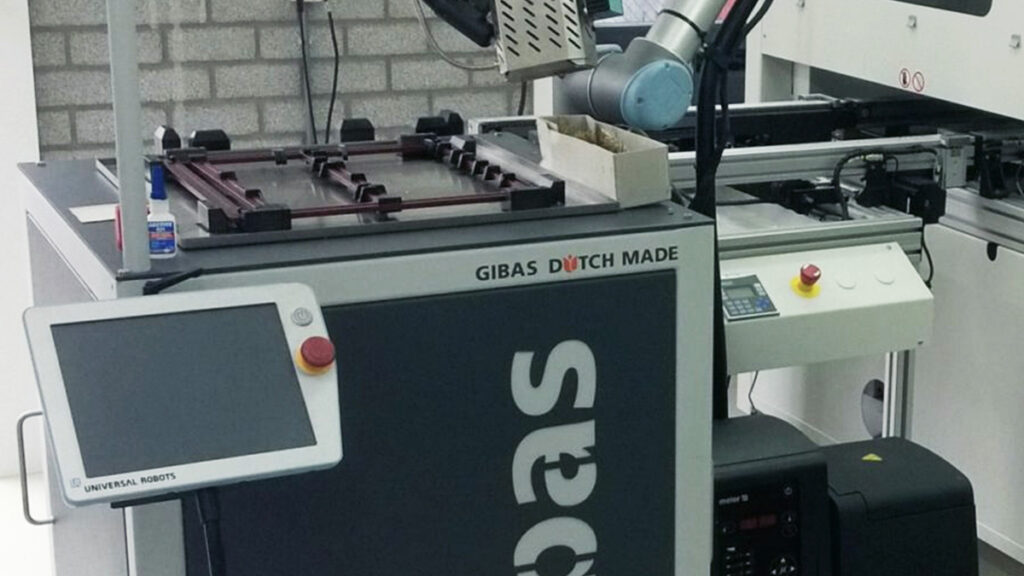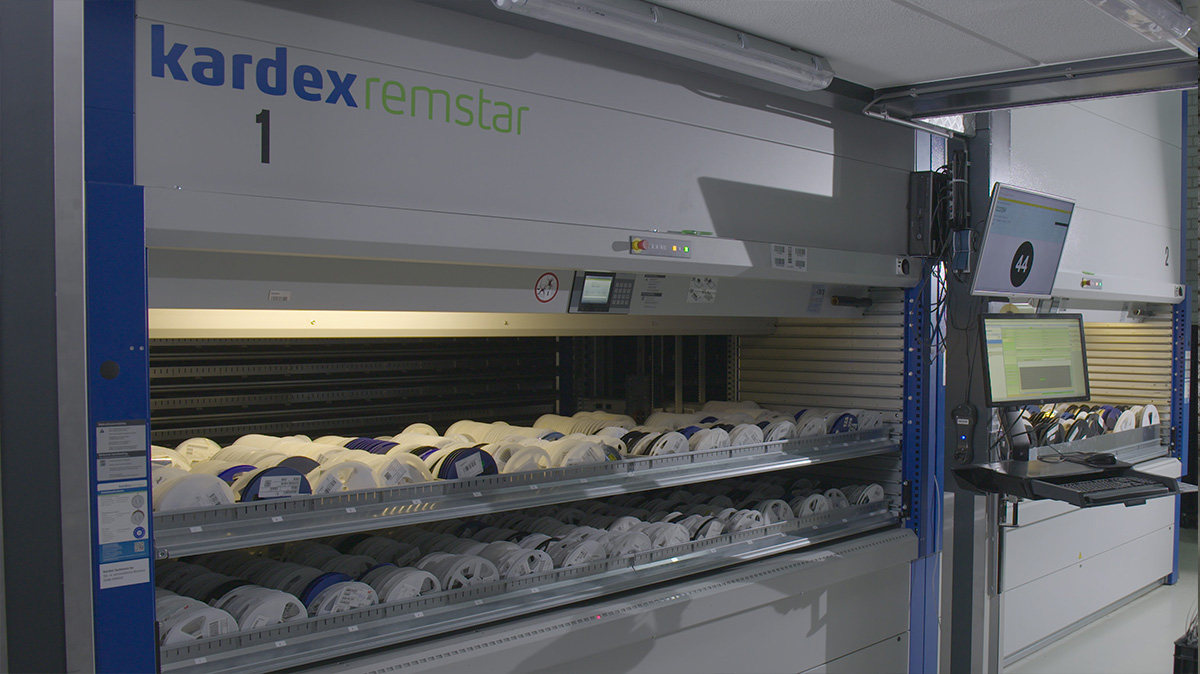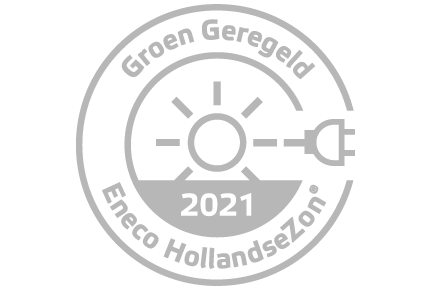Machinery
The miniaturisation of electronics relies on state-of-the-art equipment. Makso always invests in the very latest, modern machinery, which helps it achieve the high quality, speed and flexibility that customers want. Capacity is always reserved for rush orders.
A selection of the machinery Makso has to offer:

Fuji NXT3 line
With the purchase of the Fuji NTX3 line, Makso has significantly increased its production capacity.
More information
The 3 H24 heads offer exceptional speed and precision in placing a wide range of components. Whether it’s microchips, resistors, or capacitors, the H24 heads ensure accurate and reliable placement of these essential electronic parts. Thanks to the 4 DX heads, Makso Assembly can assemble complex circuit boards at high speed, reducing the overall project lead time. The 1 H01 head adds an extra level of flexibility, making it possible to handle specific soldering processes and odd-form components.

Mydata SMD production lines
High-quality, automated pick-and-place production lines that deliver high-speed, reliable production. The machines can be set up quickly, which increases flexibility.
More information
We use 6 pick-and-place machines, set up in 4 lines, to fulfil orders ranging from 2 to 200,000 pieces per year.
These pick-and-place machines enable us to assemble panels varying in size from a minimum of 70 x 50 mm to a maximum of 640 x 510 mm.
We can place a wide range of components, e.g.: 03015, SOIC, PLCC, TSOP, QFP, BGA, flip chip, oddshape, surface-mount connectors, through-hole components, CSP, CCGA, DPAK, Alcap and Tantalum.
With a minimum component specification of 0.3 x 0.15 (0.012” x 0.006”) (03015) and a maximum component specification of 140 x 73 x 15 mm (5.51″ x 2.87″ x 0.59″). Component weight: 140 g
The pick-and-place machines also feature an electrical verification system for resistors, capacitors, transistors, and diodes, which ensures the right values are placed in the right position. Polarised components are verified too.
By combining the modernised feeders with the use of MyCenter and MyTrace, we are able to guarantee full traceability as well.

Reflow soldering process
The following machinery is at the heart of Makso’s production lines: 1x HB Automation 10-zone reflow oven and 3x HB-Automation 8-zone reflow oven.
More information
Before the assembled panels are automatically fed through the in-line standing ovens, an operator carries out another visual inspection and components are placed manually if necessary.
This machine makes it possible to specifically modulate each production run, resulting in a better controlled, higher-quality soldering process.
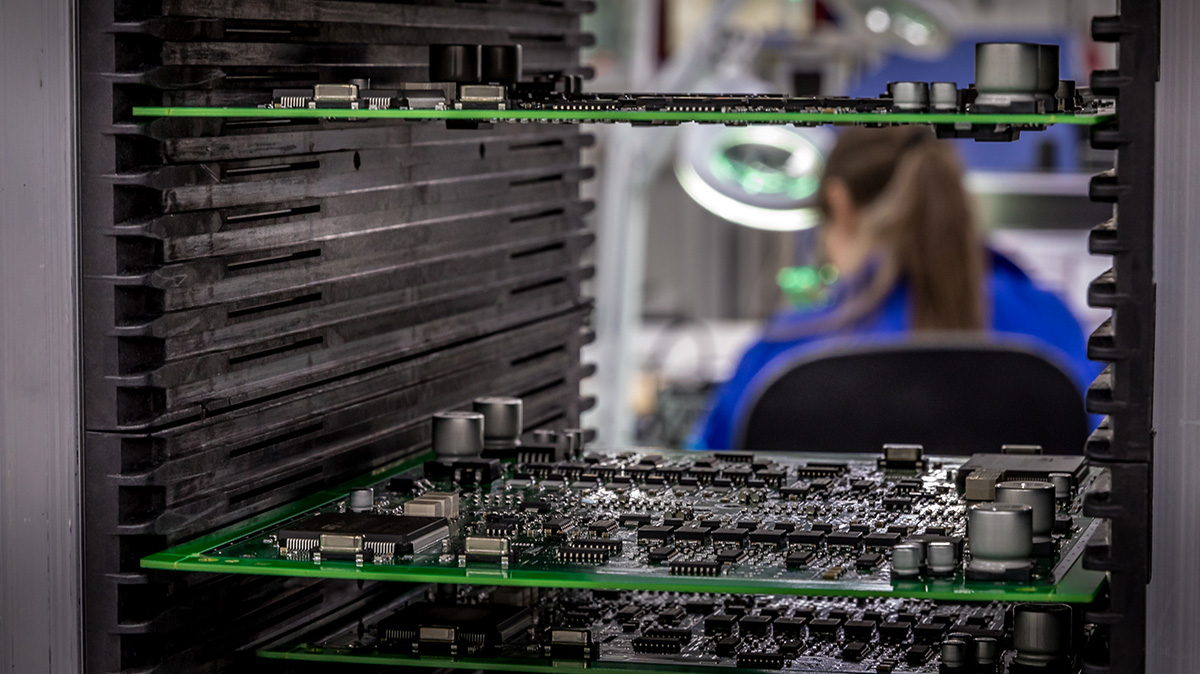
SPI
Makso uses patented Z-reference technology. Traditional SPIs measure up to 40 um above the PCB, which means they overlook smaller anomalies. Thanks to this new …
More information
technology, our VI System can generate a complete model in which even the paste output of small WLCSP components is imaged accurately. The simplicity of programming, the clear user interface and the fact that the SPI can have the stencil printer correct anomalies straight away make it an important asset.

Automatic optical inspection machines (AOI)
These machines use 5 cameras to inspect the assembled PCBs on the basis of the master sample.
More information
Makso uses 2D and 3D testing methods. The 3D testing method involves an advanced system with a shadow-free 3D sensor control. It creates a synthetic image that pushes the limit of defect detection. Makso uses 2D and 3D testing methods. The 3D testing method involves an advanced system with a shadow-free 3D sensor control. It creates a synthetic image that pushes the limit of defect detection.
Monitoring and the link between the SPI and AOI results make it possible to track anomalies even faster and better than before.

Ersa Versaflow 3 selective soldering machine
The VERSAFLOW 3/45 is an in-line selective soldering machine with double-track transport. Taking up just a small amount of space, it enables us to achieve the greatest flexibility …
More information
and the highest throughput. This machine has 2 soldering options: mini-wave and mini-dip.
For the selective soldering of conventional products with very precise, clean and beautiful results. We use 4 solder pots (2 lead-free and 2 leaded). This allows us to change products quickly and lose the minimum of production time.

Laser machine
The laser machine adds a minute QR code to PCBs. Linked to the track-and-trace system, this enables us to retrieve detailed production process information from each PCB assembled.
More information
This machine, which has an integrated converter for double-sided marking, has a program-controlled conveyor-belt width setting.
- Fiducial control and compensation
- PCB orientation control function aided by integrated CCD camera and illumination
- Additional MS-4 scanner for reading longer 1D codes

Ersa hybrid rework 550
The Ersa Hybrid rework machine is used to desolder, place and solder all kinds of SMDs (Surface Mounted Devices). This enables us to rework BGA, QFN, QFP and …
More information
PLCC components that have already been placed as part of a fully controlled process. A custom-made solder profile is used for each component and each PCBA.

PVA2000 selective coating line
The PVA2000 selective coating line is an in-line process. It is used to add a conformal coating to PCBAs. The coating line can coat the entire PCBA or apply a selective …
More information
conformal coating. The line also features an in-line UV inspection machine and an in-line curing oven. A Humiseal (diluted as required) is used to maximise consistency on this line.

DEK
Our production lines feature two DEK/ASM stencil printers. With the future in mind, we have opted for a machine that is able to manufacture your most challenging and …
More information
complex products. PCBs as big as side tables and components as small as grains of sand? Bring them on! This investment has future-proofed our stencil process. DEK/ASM has been known for its reliability, quality and performance for decades now: all three of these are important selling points for Makso too.

Gibas – Bühnen hot melt blue robot
Hot melt glue, precisely dosed, exactly where it’s needed.
Makso is seeing increasing demand from customers …
More information
for the use of a hot melt glue robot to secure certain components to a PCB. We offer a composite robot setup that can independently take on repetitive gluing work for every order.
Baking oven
Makso’s baking ovens are designed to reduce the relative humidity of PCBs as much as possible before they enter the pick&place and reflow processes. A low relative humidity is particularly important …
More information
during the reflow process, when the PCBs are briefly heated up to the melting point of the solder paste. Excessive humidity can affect the result achieved. This is why all PCBs spend a night in the oven first.
Climate chamber
The climate chamber is used to store PCBs and temperature/moisture-sensitive components in, to prevent any further moisture forming and also any temperature changes.
For more information, drop us an mail or call us on +31 318 548 454
Makso Assemblage B.V.
Einsteinstraat 16
3902 HN Veenendaal
Nederland
© Copyright 2021 – Makso Assemblage



